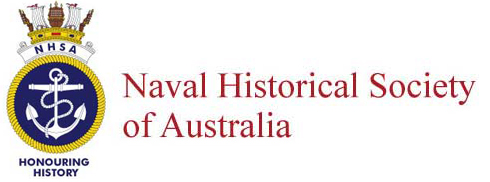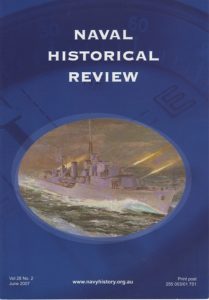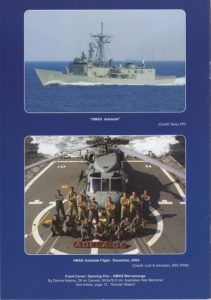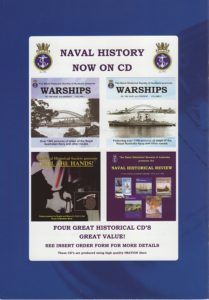- Author
- Book reviewer
- Subjects
- Biographies and personal histories, Naval Aviation, Book reviews, Aviation, Biographies
- Tags
-
- RAN Ships
- HMAS Albatross (Shore Establishment), HMAS Melbourne II, HMAS Sydney II
- Publication
- September 2024 edition of the Naval Historical Review (all rights reserved)
Hardback by Graeme Lunn, fully illustrated with colour plates, published by Avonmore Books, 2024. RRP $49.95.
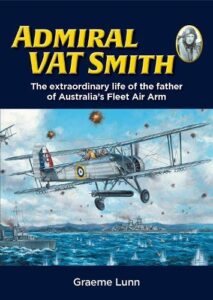 While few of Australia’s naval leaders have attracted full biographies, Admiral Sir Victor Alfred Trumper Smith – commonly known as ‘VAT’ and as the father of the Fleet Air Arm – certainly deserves one. Graeme Lunn, himself a former naval aviator, has produced a comprehensive, easy to read and very nicely illustrated examination of VAT’s life. In doing so he has contended with the usual challenges confronting biographers and, in this case, the special challenge of writing about someone who was notoriously reluctant to speak about himself.
While few of Australia’s naval leaders have attracted full biographies, Admiral Sir Victor Alfred Trumper Smith – commonly known as ‘VAT’ and as the father of the Fleet Air Arm – certainly deserves one. Graeme Lunn, himself a former naval aviator, has produced a comprehensive, easy to read and very nicely illustrated examination of VAT’s life. In doing so he has contended with the usual challenges confronting biographers and, in this case, the special challenge of writing about someone who was notoriously reluctant to speak about himself.
Before joining the Navy as a 13-year-old Cadet Midshipman in 1927, VAT enjoyed a comfortable childhood in Sydney, developing his interests in music, sport and Cubs. At the Naval College, he excelled at rugby, and while he became a cadet captain, his academic results were only average. Progressing through his College and sea training, he began to impress his seniors as being solid and reliable. During his attachment to the Royal Navy for further training in 1932 he was exposed to carrier aviation and decided to specialise in that field, even though there were few opportunities for it in the RAN.
Much of the book is taken up with VAT’s Second World War and Korean War exploits, both in squadron and ship postings. Here and throughout the book, the author places VAT’s exploits in the broader context of the time, thus adding significantly to the value of the book and to our appreciation of his subject. During the Second World War he led an attack on the Scharnhorst, was shot down twice and survived several other intense actions. War seems to have brought out the best in VAT.
The long-reported steadiness and reliability were complemented by conscientiousness, leadership skills and even a sense of humour. These traits seemed to come to the fore during his time as XO HMAS Sydney, during the carrier’s Korean War deployment. The ship and air group performed commendably, reflecting the efforts of all on board and not least those of VAT, who led by example and exhortation. By now he had come to the notice of the Navy’s leaders as someone with potential for higher ranks.
After the Second World War VAT was intimately involved in the planning and establishment of the RAN Fleet Air Arm. His capacity for hard work, evident sound judgment and excellent results enhanced his growing reputation. Two seagoing commands, including the aircraft carrier HMAS Melbourne and command of the Naval Air Station Nowra, were the final steps in his ascension to flag rank and ultimately a knighthood. The fact that he went on to become the Chief of the Naval Staff and ultimately Chairman of the Chiefs of Staff committee (CDF in today’s terms) seemed inevitable by the time VAT made Rear Admiral, yet such success seemed utterly unimaginable early in his career.
The book ends by referring to VAT’s portrait hanging in the Wardroom at NAS Nowra, ‘unremarked by the young aviators’ of today. The author suggests that those young aviators could find no better guide for their own careers. This reviewer’s own experience as a young aviator at Nowra suggests that we pay little attention to the exploits and experience of our predecessors. As with VAT’s portrait, I hope that this excellent book also helps to kindle a deep interest in the life of an exemplar.
Reviewed by Dr Jack McCaffrie CDRE RAN (Rtd)
